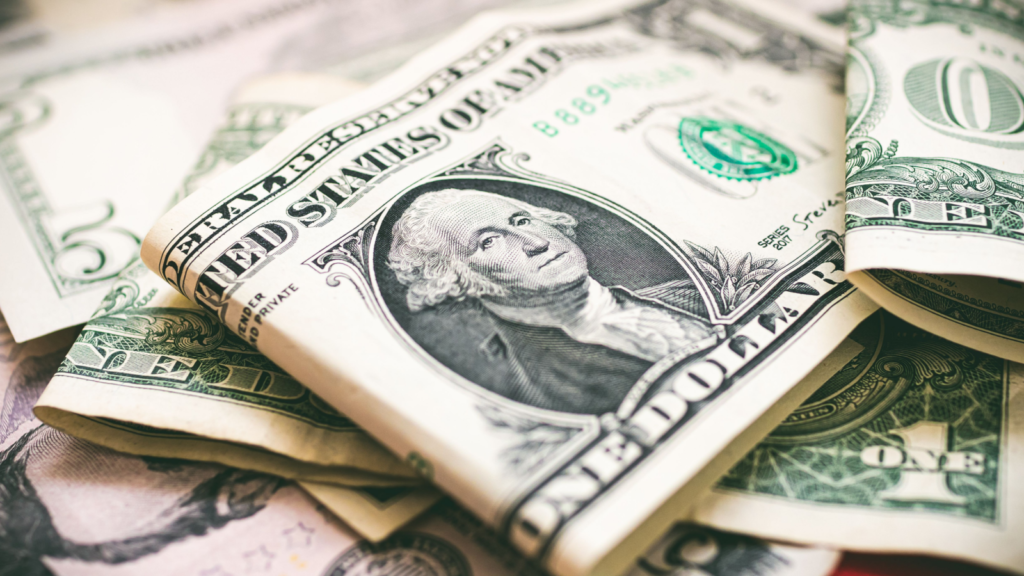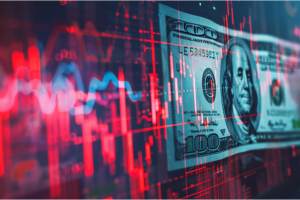
“If you can count your money, you don’t have a billion dollars.” –J. Paul Getty
We’re at a critical juncture now, in my view. I’ve been arguing on X, the platform formerly known as Twitter, and Threads that the risk of a credit event is heightened in September. This is not only because of seasonality but also because of other intermarket stress points. Utilities are starting to show signs of outperformance, lumber to gold is weakening, and the dollar has surged despite everyone calling for a secular bear market in the greenback.
As I’ve argued before, the dollar is about to have the greatest comeback since Lazarus, and the move has been sizeable. But there is a very real risk here that the dollar will not only become a beneficiary of a credit event but the source of one.

I cannot stress this enough. It’s not like the Fed is going to raise rates anywhere near as quickly and as much as they already have. The dollar’s strength here is not based on expectations of increased hawkishness. The move seems to be more due to other global stress points causing a flight to safety onto U.S. shores. When the dollar is strong, there is significant pressure on the global economy and corporate earnings, and that pressure is early.
The Impact of the U.S. Dollar
The euro and the pound have lost significant value since last year due to a variety of factors, including political uncertainties, economic events, and changes in interest and exchange rates. The yen has also depreciated significantly. I’ve talked extensively about the yen and risk of a reverse carry trade here on InvestorPlace, and that remains very much in play.
If the Bank of Japan is forced to defend the yen, it would push the yen, in dollar terms, higher. But the dollar against all other currencies would likely appreciate purely because of a deleveraging that would get sparked by a global margin call as a result.

The rise in the value of the dollar could have a significant impact on emerging markets into end of year, particularly in Asia. A strong dollar makes dollar-denominated debt more expensive, which could exacerbate financial instability in these regions.
The broad depreciation of major Asian currencies against the dollar could result in a demand for financial assistance from the International Monetary Fund, which is a not-so-far-fetched outcome, particularly given the state of China’s economy and other ripple effects in the global financial system.
What’s Next
Let’s play it out. Let’s say the dollar continues to strengthen and takes out the prior year’s highs. If that were to happen, I suspect you’d have a significant spike in equity volatility and flight to safety sequence in all risk-off assets, including Treasuries. The dollar’s unabashed strength could cause a significant emerging market sovereign debt crisis and result in a nasty series of events in short order.
I really do believe we are at an important short-term juncture here. For bulls to be right on a continuation of the “melt-up” (which is an illusion driven by large-cap idiosyncratic risk by the “Magnificent Seven” stocks), the dollar likely needs to reverse course and depreciate right now to take the edge off of global economic strain.
If the dollar were to continue at the pace we’ve seen, it would further the argument the credit crisis has begun, and most won’t admit it until it’s too late.
The Lead-Lag Report is provided by Lead-Lag Publishing, LLC. All opinions and views mentioned in this report constitute our judgments as of the date of writing and are subject to change at any time. Information within this material is not intended to be used as a primary basis for investment decisions and should also not be construed as advice meeting the particular investment needs of any individual investor. Trading signals produced by the Lead-Lag Report are independent of other services provided by Lead-Lag Publishing, LLC or its affiliates, and positioning of accounts under their management may differ. Please remember that investing involves risk, including loss of principal, and past performance may not be indicative of future results. Lead-Lag Publishing, LLC, its members, officers, directors and employees expressly disclaim all liability in respect to actions taken based on any or all of the information on this writing.




